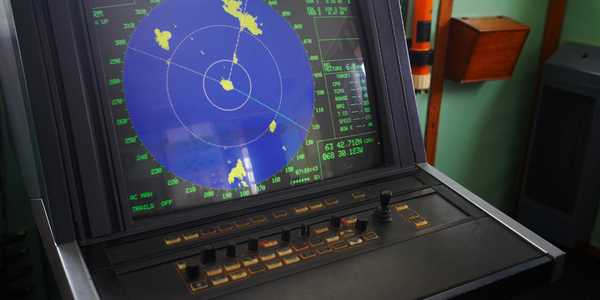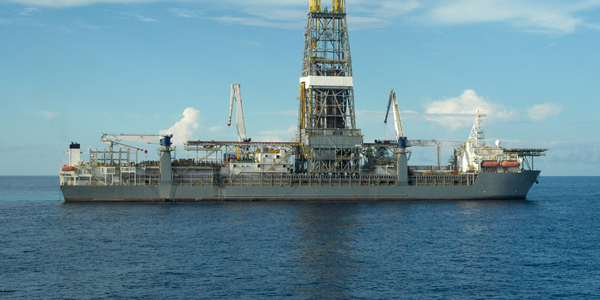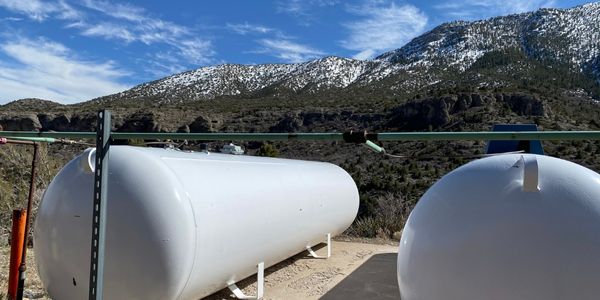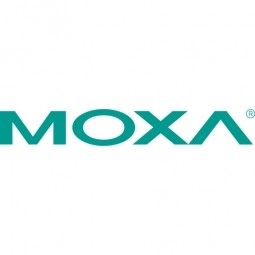Download PDF
Real-time Networked Sonar System for Ships

Technology Category
- Networks & Connectivity - Gateways
Applicable Industries
- Marine & Shipping
The Challenge
A multinational, knowledge-based corporation that delivers marine electronics solutions is utilizing industrial Ethernet technology to help ensure that operations at sea are dependable and optimal. Based in Europe, the company has nearly 4000 employees working in 20 countries around the world, and produces high-tech systems for offshore oil and gas operations, merchant marine systems, and various applications for the defense and aerospace industries.
The company produces products and systems used by merchant vessels and offshore installations for positioning, navigation, automation, as well as for surveying and monitoring the seabed, and for fishing vessels and fi sheries research. As one of the major suppliers of high quality marine electronics in the world, their products include chart plotters for yachts, triple redundant dynamic positioning systems for oil drilling rigs, and sonar and instrument systems for scientifi c research vessels.
Products used for marine applications must be rugged enough to endure the corrosive effects of salt water, and be able to withstand excessive amounts of vibration and shock. For this reason, the company only uses DNV and GL certified products and components to ensure that their systems can meet the high standards required by the maritime industry.
About The Customer
Global Systems provider for Shipbuilding Europe
The Solution
The sonar positioning system requires a high-speed network to connect devices in the hull unit room to other devices on the bridge. In addition to requiring DNV and GL certifi ed components, speed and redundancy are also critical considerations. For this reason, the sonar positioning system uses Moxa's managed Ethernet switches to form a redundant network between the sonar system in the hull, and electronic devices on the bridge.
Each sonar unit uses one transmit transducer array and one receive transducer array that link to the main transceiver for detecting objects under water. Moxa's EDS-518A Gigabit managed switch is used in the hull unit room to connect to different sonar devices, and the EDS-510A-1GT2SFP Gigabit managed switch is housed on the bridge. Together, the switches create a gigabit redundant ring that connects the sonar system to the bridge. The EDS-518A uses its two gigabit ports connect to the EDS-510A's gigabit ports to form the redundant gigabit backbone. The third gigabit port on the EDS-510A is connected to the operations station for massive amounts of data communication.
Transceivers are installed in different parts of a ship for different types of applications. For anti submarine and mine detection applications for example, the transceiver would be located near the bow of the ship. On the other hand, for commercial and research type vessels, the transceiver would be located near the stern. The Ethernet network allows the system to transmit signals from the sonar to the ship's bridge in real time. This is particularly important for anti-submarine and mine detection applications, since having access to real-time information is essential for the survival of the ship and its crew.
Product Solutions:
1. EDS-510A Series
7+3G-port Gigabit managed Ethernet switches
2. EDS-518A Series
16+2G-port Gigabit managed Ethernet switches
Each sonar unit uses one transmit transducer array and one receive transducer array that link to the main transceiver for detecting objects under water. Moxa's EDS-518A Gigabit managed switch is used in the hull unit room to connect to different sonar devices, and the EDS-510A-1GT2SFP Gigabit managed switch is housed on the bridge. Together, the switches create a gigabit redundant ring that connects the sonar system to the bridge. The EDS-518A uses its two gigabit ports connect to the EDS-510A's gigabit ports to form the redundant gigabit backbone. The third gigabit port on the EDS-510A is connected to the operations station for massive amounts of data communication.
Transceivers are installed in different parts of a ship for different types of applications. For anti submarine and mine detection applications for example, the transceiver would be located near the bow of the ship. On the other hand, for commercial and research type vessels, the transceiver would be located near the stern. The Ethernet network allows the system to transmit signals from the sonar to the ship's bridge in real time. This is particularly important for anti-submarine and mine detection applications, since having access to real-time information is essential for the survival of the ship and its crew.
Product Solutions:
1. EDS-510A Series
7+3G-port Gigabit managed Ethernet switches
2. EDS-518A Series
16+2G-port Gigabit managed Ethernet switches
Operational Impact
Related Case Studies.

Case Study
Drill ship power challenge: hybrid solution solves distribution issues
Aspin Kemp & Associates (AKA), a manufacturer of electrical power and control systems headquartered in Montague, PEI, encountered one with its hybrid power initiative, the first hybrid drill floor destined for installation on ultra-deepwater drill ships operated by Transocean, Swiss offshore drilling contractors. Since on-site modification was impossible and scrap recycling of any modifications was unacceptable, the enclosures had to arrive ready-to-install.

Case Study
Ensures Tanker Safety and Emissions Compliance
Storage tanks are irregular in shape and a certain amount of mathematical modelling is required to get an accurate representation of volume and, more importantly, the weight of material in each tank. In addition, countries have different emission regulations, so the ships position needed to be accurately known in order to geotag emission data.

Case Study
Fleet Management Connectivity Solution for Marzam
Marzam, in order to ensure the best service, invested 3 million dollars in the construction of 2 fuel oil tanks with 40k gallons and 10k gallons capacity each, located in Manta, Ecuador. The customer needs to keep fleet operations going with fuel available at all times in order to guarantee quality of service. KEY ELEMENTS FOR THE CUSTOMER: Real-time level monitoring: Tank infrastructure remote level monitoring. Configure alerts and notifications when reaching critical values to avoid the need for emergency refills and optimize supply schedules. Real-time consumption monitoring: The customer needed an easy way to monitor in real-time accurate values of consumption.

Case Study
Mitsubishi Electric's Edge Computing Solution Powered by Wind River VxWorks
Mitsubishi Electric Corporation, a global leader in factory automation (FA) applications, identified edge computing as a critical component of the Industrial Internet of Things (IIoT). The company aimed to enhance device and data security, reduce data traffic to the cloud, and enable faster response to network or device issues. In 2018, Mitsubishi Electric launched its first line of industrial hardware products designed for edge computing, the MELIPC Series. The primary development goals for MELIPC were to support the type of edge computing promoted by Mitsubishi Electric and to introduce advanced vision technology for device control. The flagship computer of the MELIPC line, the MI5000, was designed to combine real-time equipment control with high-speed data collection, processing, diagnosis, and feedback in a single machine. However, the development team needed a real-time control platform that could seamlessly integrate real-time control with proven analytic and diagnostic applications.

Case Study
Migrating to Software-Only Licenses for More Responsive License Management
The world’s premier shipping companies work with the software solutions of ABB Marine & Ports to get their vessels safely and efficiently to their destinations. A loyal customer of Wibu-Systems for over a decade, ABB has been relying on CodeMeter dongles to store the license keys for their ABB AbilityTM Marine Advisory System - OCTOPUS.The current version of the system is using Wibu-Systems’ robust metal-case CmStick ME, a perfect choice for the rugged conditions at sea. As satellite communications has made fast Internet connections at sea a common reality for maritime operators, the company is looking to move from physical to software solutions to streamline its logistics processes.

Case Study
Innovative IoT Solution for Aquaculture Waste Management by Blue Ocean Technology
Blue Ocean Technology, a company specializing in aquaculture waste management, was seeking an innovative solution to optimize their systems that convert fish sludge into valuable fertilizer. The company aimed to construct a compact system that would minimize both their environmental footprint and power consumption. They also wanted to remotely monitor the drives and motors that manage the pumps in their system. Ensuring the cybersecurity of their plant was another significant challenge they faced. The company was in need of a solution that would not only meet these requirements but also enhance their profitability and sustainability.





